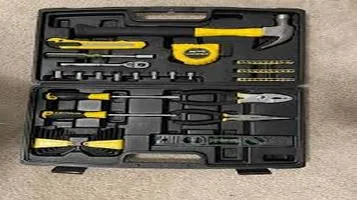Open Shelving: A Comprehensive Review
Open shelving is a versatile and contemporary storage solution that combines functionality with aesthetic appeal. Unlike traditional cabinets with doors, open shelving features exposed shelves, allowing easy access and visibility to items. This design is particularly popular in kitchens, living rooms, and offices, where it serves both practical and decorative purposes. In kitchens, open shelving allows for the display of dishes, glassware, and cookbooks, creating an inviting and personalized space. It encourages organization, as items are on display and need to be neatly arranged. In living rooms, open shelves can showcase books, artwork, and collectibles, adding character and warmth to the decor. The minimalist design promotes a sense of openness and airiness, making spaces feel larger and more inviting.

Open shelving has become one of the most popular trends in interior design over the past few years. From kitchens to living rooms, this design choice is making its presence felt in various parts of the home. But as with any design trend, it's essential to weigh its pros and cons before jumping on the bandwagon. In this review, we'll delve into the aesthetic appeal, practical benefits, and potential downsides of open shelving, providing you with a well-rounded perspective to help you decide if this is the right choice for your space.
Aesthetic Appeal
One of the primary reasons people are drawn to open shelving is its aesthetic potential. Open shelves can transform a room, making it appear more spacious and airy. Unlike traditional cabinets, which can sometimes make a room feel closed off, open shelves allow for a sense of openness. This is particularly beneficial in smaller spaces where maximizing visual space is crucial.
Open shelving also offers an excellent opportunity for personal expression. By displaying your favorite items—whether they be colorful dishes, vintage books, or beautiful plants—you can add a unique touch to your home. This level of personalization is harder to achieve with closed cabinets, where items are hidden from view. The ability to showcase beautiful objects can turn everyday items into a form of art, adding character and charm to your home.
Practical Benefits
When it comes to practicality, open shelving has several advantages. First and foremost is accessibility. With open shelves, everything is visible and within reach, which can make cooking and other daily tasks much more efficient. You no longer have to rummage through cluttered cabinets to find what you need; everything is right there in front of you.
Another practical benefit is the ease of installation. Open shelves are generally easier and less expensive to install than traditional cabinets. This can be a significant advantage for those on a budget or those who enjoy DIY projects. Plus, the flexibility in spacing and arrangement allows for customization to fit your specific needs and preferences.
Potential Downsides
While open shelving has many benefits, it also comes with its set of challenges. One of the most significant downsides is the issue of maintenance. Open shelves are prone to collecting dust, and since everything is on display, dusting becomes a more frequent and necessary task. In a kitchen setting, grease and grime can also accumulate on items stored on open shelves, requiring regular cleaning.
Another concern is the potential for clutter. Open shelving necessitates a certain level of organization and tidiness. If you're not naturally inclined to keep things in order, open shelves can quickly become a source of stress rather than a design feature. The need to keep items neatly arranged can be a double-edged sword; while it encourages organization, it also demands it.
Safety is another factor to consider. Open shelves are not always the best option for households with young children or pets. Fragile items can be easily knocked off, leading to potential hazards. In such cases, a mix of open shelving and closed cabinets might be a more suitable solution.
Versatility and Adaptability
One of the standout features of open shelving is its versatility. This design choice can be adapted to various styles, whether you're going for a rustic farmhouse look, a sleek modern aesthetic, or something in between. The materials and finishes available for open shelves are diverse, ranging from wood and metal to glass and acrylic. This adaptability makes open shelving a viable option for virtually any design scheme.
Moreover, open shelving isn't limited to the kitchen. It can be effectively used in living rooms, bathrooms, and even bedrooms. In a living room, open shelves can serve as a stylish display for books, photos, and decorative items. In a bathroom, they can provide easy access to toiletries and towels while adding a spa-like feel. In bedrooms, open shelving can replace traditional nightstands or be used to display personal mementos.
Conclusion
Open shelving is a design trend that offers a blend of aesthetic appeal and practical benefits, making it an attractive option for many homeowners. Its ability to make spaces feel larger and more open, coupled with the opportunity for personal expression, makes it a compelling choice. The ease of accessibility and installation further adds to its appeal.
However, it's essential to consider the potential downsides, such as the need for regular maintenance, the risk of clutter, and safety concerns. Open shelving requires a commitment to organization and cleanliness, which may not be suitable for everyone.
In summary, open shelving can be a beautiful and functional addition to your home if you're willing to invest the time and effort required to maintain it. Its versatility and adaptability make it a design choice worth considering, but it's crucial to weigh the pros and cons to determine if it's the right fit for your lifestyle and needs.






